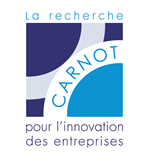Chimie Balard Cirimat Carnot Institute at European Utility Week in Paris

<p> Two researchers and a business developer from the <a href="/en/carnot-institute/chimie-balard-cirimat" target="_blank">Chimie Balard Cirimat Carnot Institute</a> will be present on stand P90 at European Utility Week. The event takes place from November 12 to 14 at the Paris Expo Porte de Versailles Showgrounds in Pavillon 1, in combination with PowerGen Europe.</p> <h5> Expertise to be showcased at EUW</h5> <p> The <a href="/en/carnot-institute/chimie-balard-cirimat" target="_blank">Chimie Balard Cirimat Carnot Institute </a>research groups help companies meet the energy challenge through the development of new materials and devices for the production and storage of energy in 3 main areas: (1) fuel cells and hydrogen energy vector; (2) thermo- & piezoelectricity; (3) batteries and supercapacitors.</p> <p> (1) Catalysts, membranes, electrolytes, electrodes for fuel cells, water electrolysis, extraction, purification & storage of hydrogen.<br /> (2) Thermo- and piezoelectric modules, thermomechanical properties of materials & interfaces.<br /> (3) Alkali ion batteries, supercapacitors, new electrolytes & electrode materials, 2D materials (carbon-based & oxides), study of surfaces, interfaces & storage mechanisms by in situ & operando methods.</p> <p> <strong>Thermoelectric oxides</strong>. The reversible conversion of heat into electricity can be obtained using thin films in the domain of microelectronics. The 3D printing of such these functional materials is also studied to allows complex shapes thermoelectric legs with complex shapes to be made.</p> <p> <strong>Electrodes for H2 production</strong>. Development of oxides as thin films to make photoanodes and photocathodes for the photoelectrolyse of water (BiVO4, CuBi2O4, …).</p> <p> <strong>H2 microsensors</strong>. Development of metal-oxide semiconductors (MOS) to monitor hydrogen production and storage sites.</p> <p> <strong>Fabrication methods</strong>. Magnétron RF Sputtering for the deposition of thin oxide films. Controlled atmosphere furnaces and lamp or laser annealing. 3D SLM/SLS Phenix Printer.</p> <p> <strong>Characterisation methods</strong>. The CBCCI disposes of a wide variety of instrumentation to characterise materials structurally, including microscopically. Electrical properties such as the Seebeck coefficient and the Hall effect can be measured. Optical characterisations are also carried out.</p> <p> <strong>Modeling</strong>. Finite element software (COMSOL) is used to model the thermal and electrical properties as well as the interaction of light with matter (for additive manufacturing SLS/M).</p>

